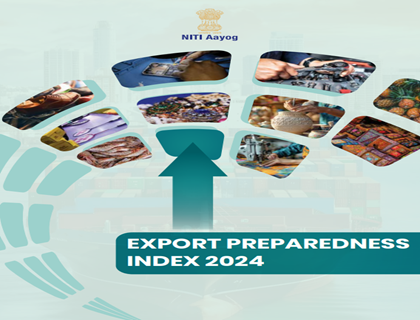Description
_RULES.jpg)
Disclaimer: Copyright infringement not intended.
Context
- The Directorate General of Civil Aviation (DGCA), India's aviation safety regulator, has reached out to Indian airlines regarding the implementation of the new Flight Duty Time Limitation (FDTL) rules.
- These rules encompass measures for stress management and fatigue among pilots.
Current Status:
- Initially slated for enforcement from June 1, the implementation of these rules faced opposition from airlines, leading to their deferment.
- The DGCA has now solicited feedback from airlines on their readiness to adhere to the new FDTL rules.
Current Flight Duty Time Limitation (FDTL) Rules in India:
- ICAO Mandate: The International Civil Aviation Organization (ICAO) mandates that the country where an aircraft operator or airline is based establish regulations for managing fatigue.
- Regulations Issued in 2019: The current FDTL rules in India, issued in 2019, categorize maximum flight duty periods per day based on maximum permitted landings and flight time.
- Rest Periods and Guidelines: The regulations stipulate mandatory rest periods between flight duty periods, in-flight rest periods for long-haul flights, other mandatory rest periods, guidelines for scheduling night operations, and maximum cumulative flight time and duty period limitations per week, two weeks, four weeks, 90 days, and one year. Special norms are also included for ultra-long-haul flights.
- Airline Responsibilities: Airlines are required to establish their own limitations within the regulator’s framework, based on ICAO standards, FAA, and EASA best practices.
- Prohibitions and Restrictions: FDTL rules prohibit airlines from asking flight crew to operate a flight if time limitations are exceeded or if crew members are fatigued to an extent that could adversely affect flight safety. Crew rosters must be prepared sufficiently in advance.
- Fatigue Management Training and Reporting: Carriers must train flight crew on fatigue management and maintain a system for fatigue report management. This system should be non-punitive and confidential, defining responses to fatigue reports. Executive responsibility for addressing fatigue management is mandated.
- Flight Crew Responsibilities: The regulations place responsibility and accountability on flight crews, prohibiting them from accepting assignments that exceed prescribed limitations or performing duties if fatigued. This is a key reason for pilots refusing to operate flights citing fatigue or FDTL norms.

FDTL rules – importance and key changes
- Flight crew fatigue and exhaustion are seen as major factors contributing to human errors in aircraft operations, which can lead to catastrophic accidents.
- Also, fatigue and exhaustion can be dangerous for the health of the crew. The DGCA had, in fact, cited a few incidents of pilot deaths ostensibly due to exhaustion while pushing airlines to adhere to the new regulations from June 1.
- Across airlines, pilots have been expressing concerns over growing fatigue and stress as a result of being stretched to their limits in terms of flying hours, haphazard and ill-planned rostering, and unusually high crew utilisation levels as carriers compete to rapidly expand their networks. Some of these issues were among the reasons behind numerous Vistara pilots calling in sick last week, leading to network-wide cancellations and delays for the airline.
- As per the new rules, among other changes, mandatory weekly rest period for pilots shall increase to 48 hours from the current 36, and their night flying shall also come down through a combination of extension of definition of ‘night’ by an hour and curtailing the number of night landings allowed to be made by the same crew.
- Clearly, these rules would require airlines to either hire and train more pilots in order to maintain their existing scale of operations. The alternative would be to scale back operations.
- Airline officials lament that hiring, training, and releasing pilots for duty is a process that takes several months, and a hard deadline that gives only a few months to the carriers would impact their operations and business.
- Those in favour of expeditious implementation of the new rules argue that airlines had enough time to prepare for the June 1 deadline as the new rules were notified early January and the carriers were ostensibly sounded out much before that by the DGCA through the consultative process on the new rules.
Challenges and Compliance:
- The stringent nature of FDTL regulations often leads to pilots refusing flight assignments citing fatigue or non-compliance with FDTL norms.
- Airlines must adhere to these regulations while ensuring operational efficiency and safety standards are maintained.
|
PRACTICE QUESTION
Q. Which of the following changes has been introduced in the new Flight Duty Time Limitation (FDTL) rules?
a) Extension of maximum flight duty periods per day
b) Reduction of mandatory weekly rest period for pilots
c) Increase in the number of night landings allowed for the same crew
d) Decrease in the definition of 'night' flying by an hour
Correct answer: b) Reduction of mandatory weekly rest period for pilots
|




_RULES.jpg)
_RULES.jpg)








